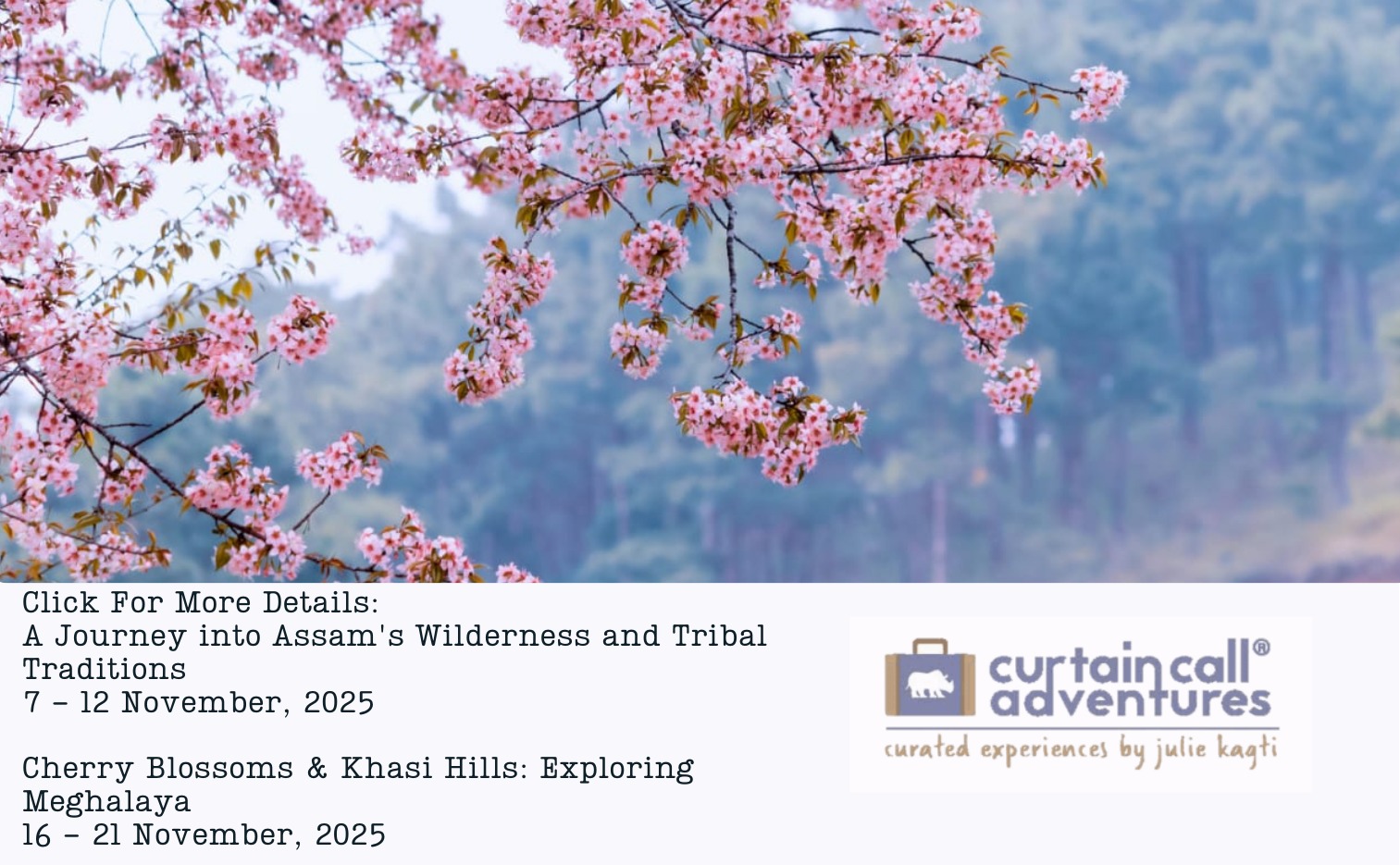Third highest peak in the world. It rises 8,586 m (28,169 ft) in a section called Kangchenjunga Himal of the Himalayan range and three of the main peaks lie in the border of India and Nepal. The first man and woman were created from the snow of its icy summit. Two British mountaineers, Joe Brown and George Band in 1955 stopped ten steps short of the summit.
Just like the clouds that surround the snowy peaks – myth and facts about the mountain form an elusive aura. Until 1852 it was considered as the highest point on earth before Mount Everest was discovered. No human has ever climbed right to the summit. This is in accordance with the wish expressed by the Chogyal (monarch of the former kingdom of Sikkim). Sikkim was ruled by hereditary monarchy till 1975 when it joined India as the 22 nd state.
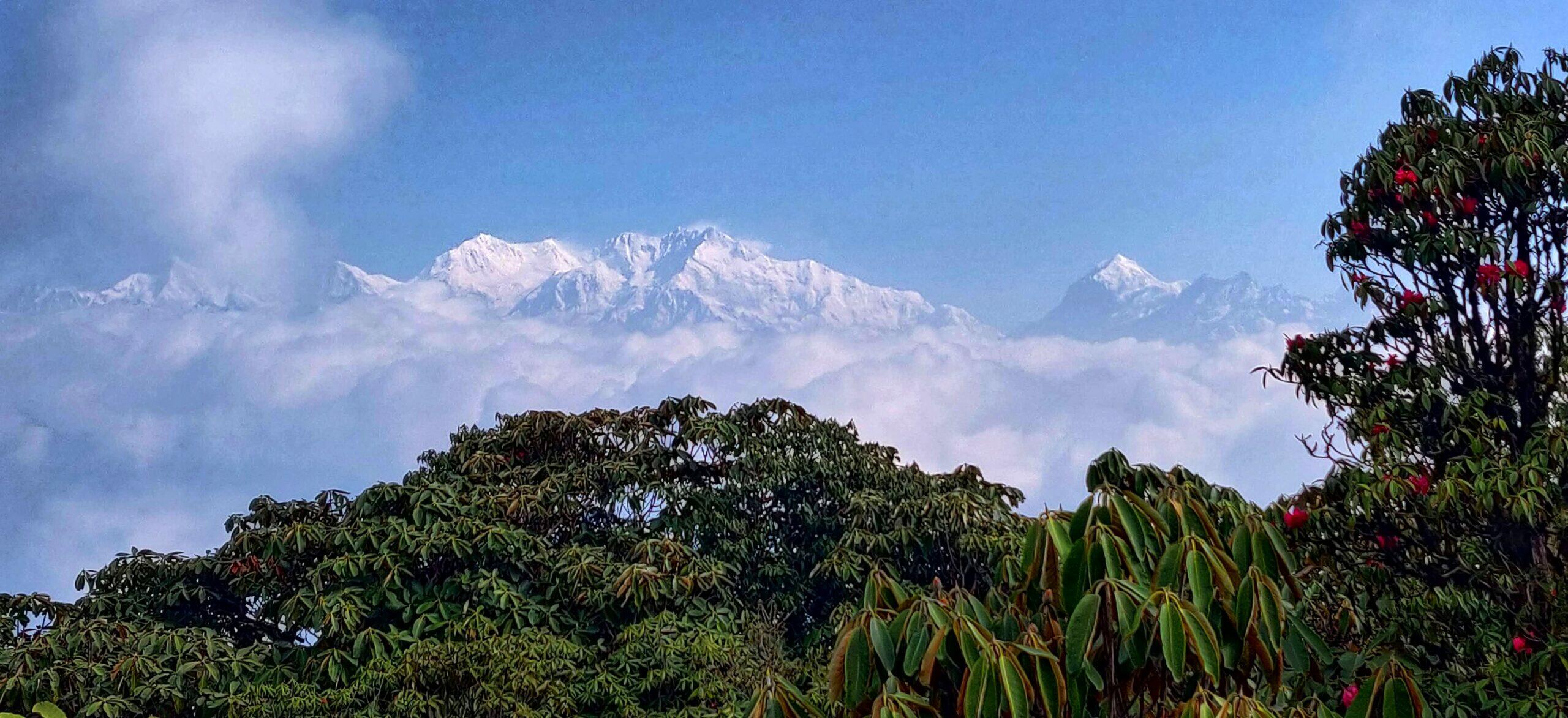
The Chogyal wanted to respect the Lepcha community’s sentiments. They worship Kanchenjunga and consider themselves as the natural descendants of the mountain. Good deeds will be rewarded in the afterlife at Mayal Lyang, a mythical paradise hidden in the foothills of the mountain. Since 2000 the Indian government has banned expeditions to the summit via the northeastern route which originates from India.
The Limbu and Lepcha communities are the oldest inhabitants of the region. In 1960’s the Chogyal declared a valley at the base of the mountain – Dzongu as protected land for the Lepcha people. Here they live undistributed. Even now all outsiders including Sikkimese who are non Lepcha people require a permit to enter.


Kangchenjunga is the official spelling adopted by The Royal Geographical Society from the Tibetan word ‘Kanchinjínga’ meaning “The five treasures of the high snow”. The Kangchenjunga transboundary is shared by India, Nepal, Bhutan and China. In each country it lies in a protected area.
There are totally 14 protected areas and seven of them are in Sikkim, India.
- Khangchendzonga National Park
- Barsey Rhododendron Sanctuary
- Fambong Lho wildlife Sanctuary
- Kyongnosla Aline Sanctuary
- Maenam Wildlife Sanctuary
- Shingba Rhododendron Sanctuary
- Pangolakha Wildlife Sanctuary
Trekking in this region has been permitted by the Indian government. The Singili La – Goecha La pass is attracting serious trekkers. Desolate and beautiful. But accommodation, food etc is extremely basic in remote rustic hamlets. Trekkers need to arrange their own supplies, tents and guides. A short documentary film, Singili La in the Himalaya was made in 2016 by George Thengummoorttil on his trek there. One needs to be fit and willingly to put up with basic infrastructure as it is difficult and requires 5 -8 days to complete. The thrill of course is getting to the snow line, seeing rare species of flora and fauna.

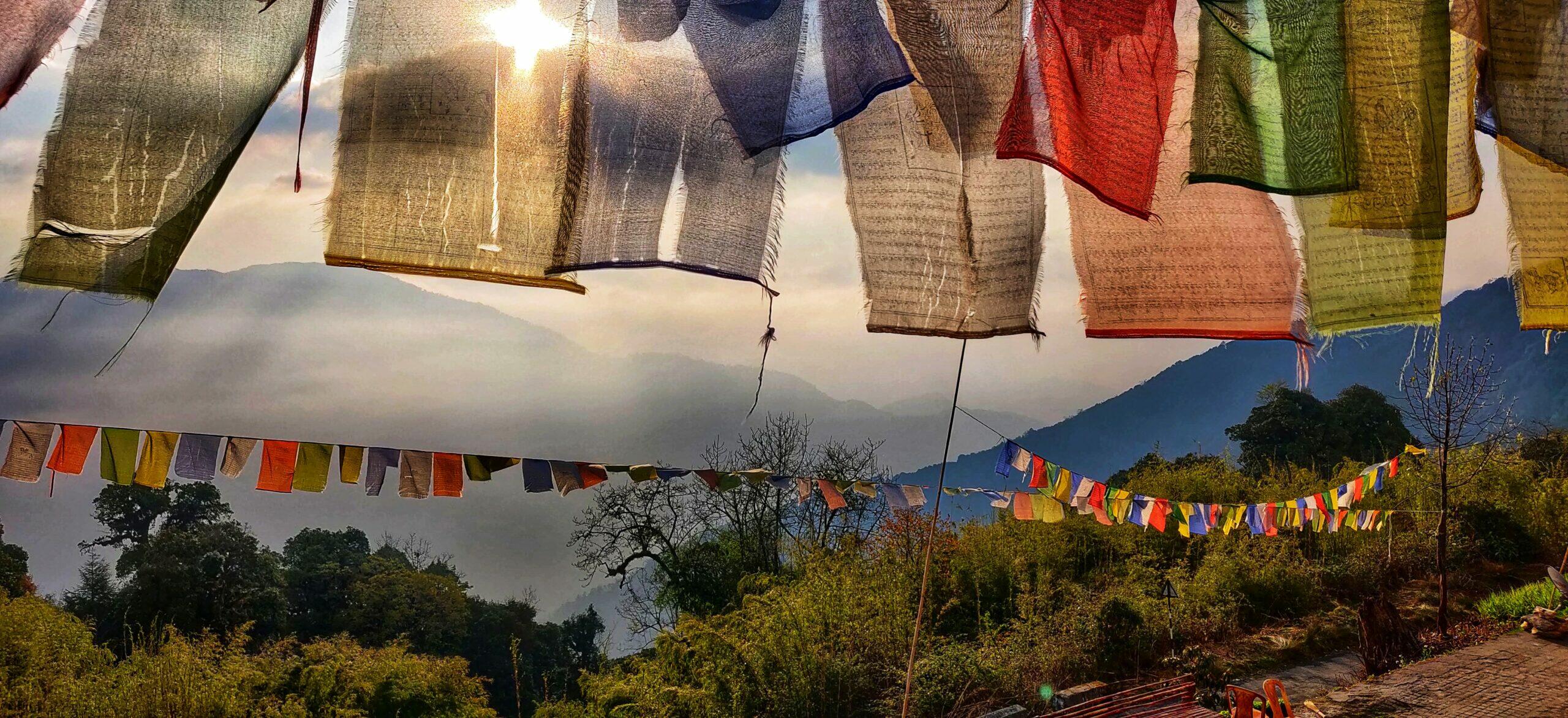
Rich in flora and fauna the sanctuaries are very interesting to nature and bird lovers. Orchids, herbs and medicinal plants, ferns, high altitude shrubs, bamboo, rhododendrons, chestnut trees are some of the vegetation. It is said that over 60% of the country’s bird varieties can be found here. Some of interest are blood pheasants, western tragopans, Tibetan snowcocks, Himalayan monals and sunbirds. The red panda, Himalayan blue sheep, snow leopard and goyal are some of the animals that can be spotted. There are various routes in and around these protected areas. Fabulous for walking and treks. This region has retained a lot of its beauty as it’s still off the popular tourist map. Walking as a mode of transport and activity is delightful. It lets one soak in the environment, appreciate and makes it a more personalised experience. It can be done at your own pace.
While hiking or trekking are more strenuous and end goal oriented. I fall in the category of walkers and a slow one at that. Remote country sides and forested areas of the northeast have always attracted me.
In April this year we are planning our annual trip to West Sikkim staying in rustic homestays and doing day walks in the countryside. Perfect month to be outdoors when so many flowers including the rhododendron are in bloom there. In the course of our 6 day stay we will be doing three long delightful walks and two short ones.

The panoramic views of the vales and mountains, catching glimpses of snowy peaks, hillsides filled with old trees, watching farmers at work in their terrace farms, going down little villages paths that run along burbling streams, listening to the sound of prayer flags fluttering, spotting a variety of birds, foraging for wild strawberries and yellow raspberries and walking for miles without human habitation in sight were some of the delights.
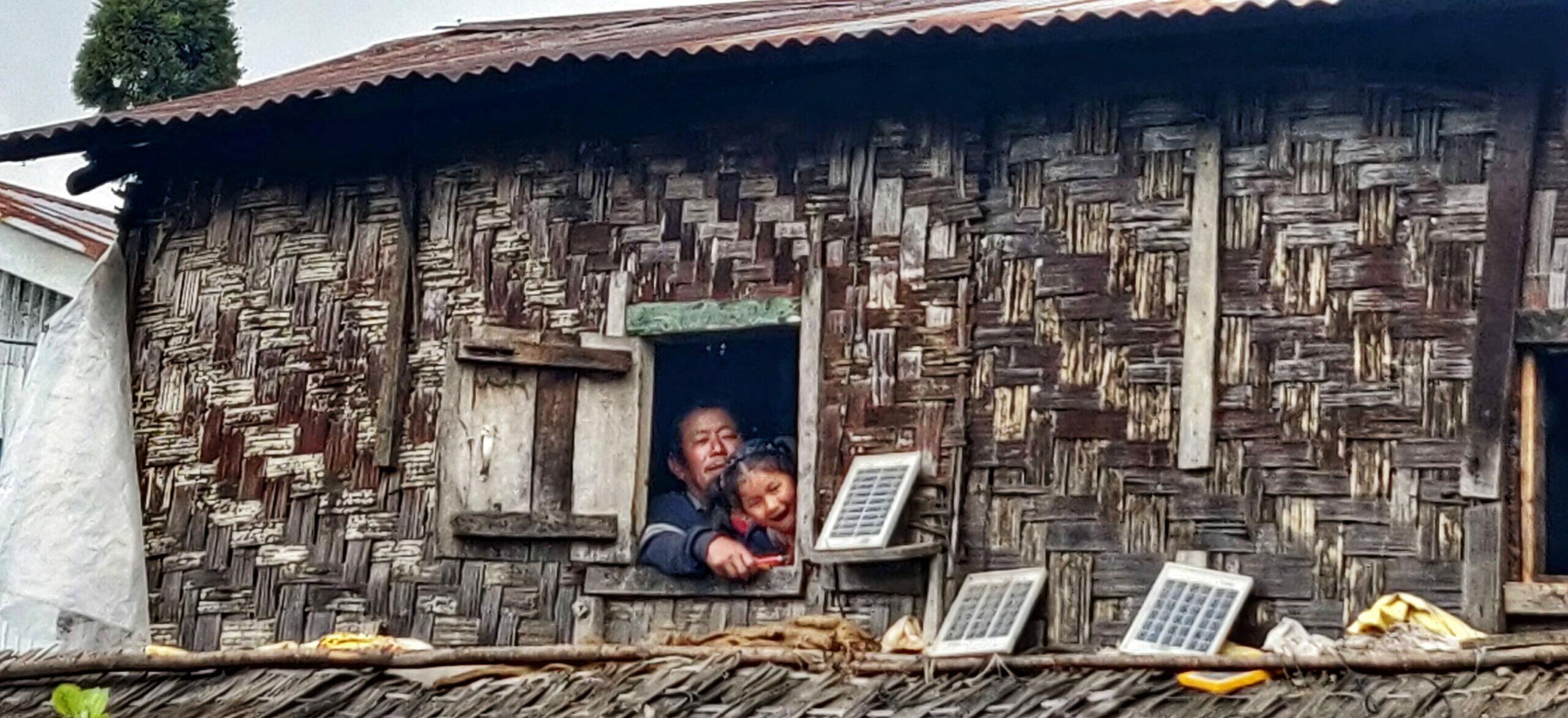

Last year one of the walks took us inside the Barsey Rhododendron Sanctuary. We started from the homestay at Okhrey at 5.45AM by car. Okhrey is a small village that offers accommodation and basic facilities to travellers visiting the sanctuary and the rural area around. An early start to increase our chances of spotting the snowy peaks and to avoid bad weather. An half an hour’s drive took us to the entrance to the sanctuary at Hilley. En route we saw wild boar. The walk was moderate and path well defined. We did take a short break for breakfast at the trekker’s hut located inside the park. Though after six hours of walking my body was stiff and really in need of a nice hot shower. Oh, the thrill of walking through uninhabited bamboo and rhododendron forest with tiny wild flowers and ferns flanking the mountainside. Walking at an elevation of 3500 meters – mottled sunlight like large fairy lights was soulful. Just the sound of birds for company. This year the rhododendrons were not profuse in bloom. Apparently, that happens every alternate year. But we saw a few along with some old magnolia trees which stood out with their big white flowers against the green foliage. There were many different types of small wildflowers.
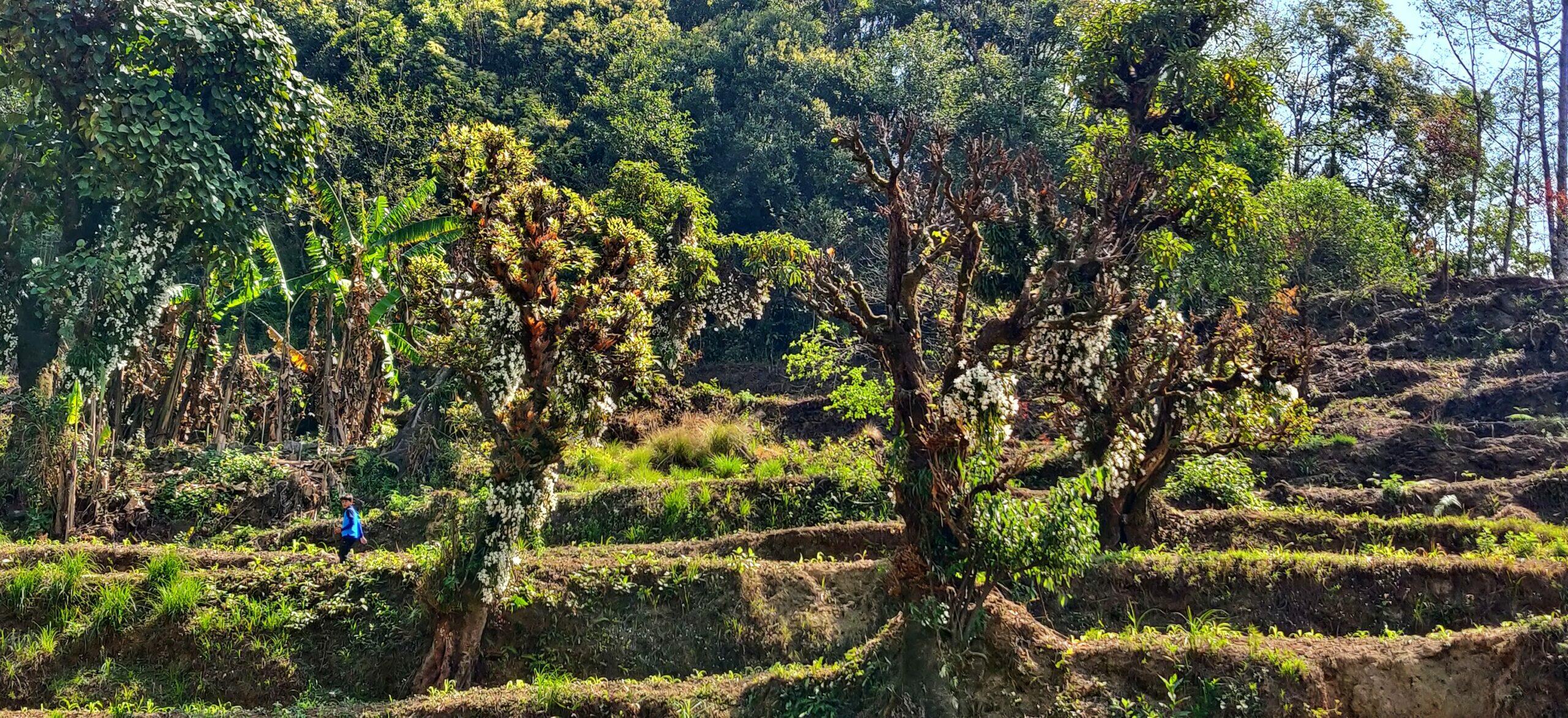
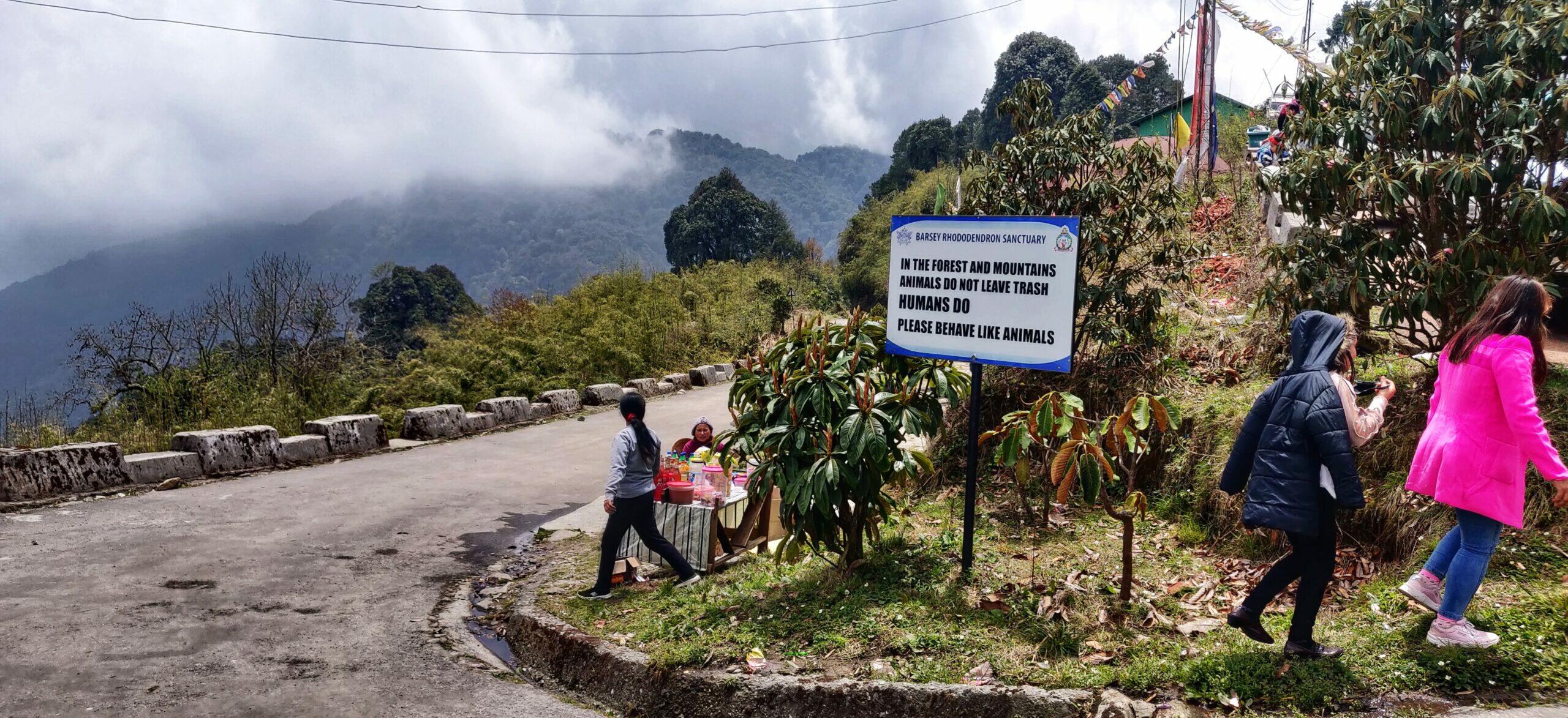
As I came up to the ridge that leads to the trekker’s hut and glanced left, oh what a sight to behold. It took me breath away as I wasn’t expecting it. Pure white now has a new reference dazzling in the morning sunlight. A large part of the Kanchenjunga range was visible including mount Pandim. From Barsey rhododendron forest it is visible to the right of the main summit. A few group photographs were quickly taken with the Kanchenjunga as the backdrop. Within 20 minutes the clouds rose and covered the peaks swiftly as a priest covers the idols in a temple.
We were extremely lucky to catch the spectacular view as the season for thunder storms had started. Never know when the sudden rain showers will start or stop. The clouds filled with rain usually hang ominously blocking all views of the mountain and its icy peaks. Very rare at this time of the year to get a clear view.
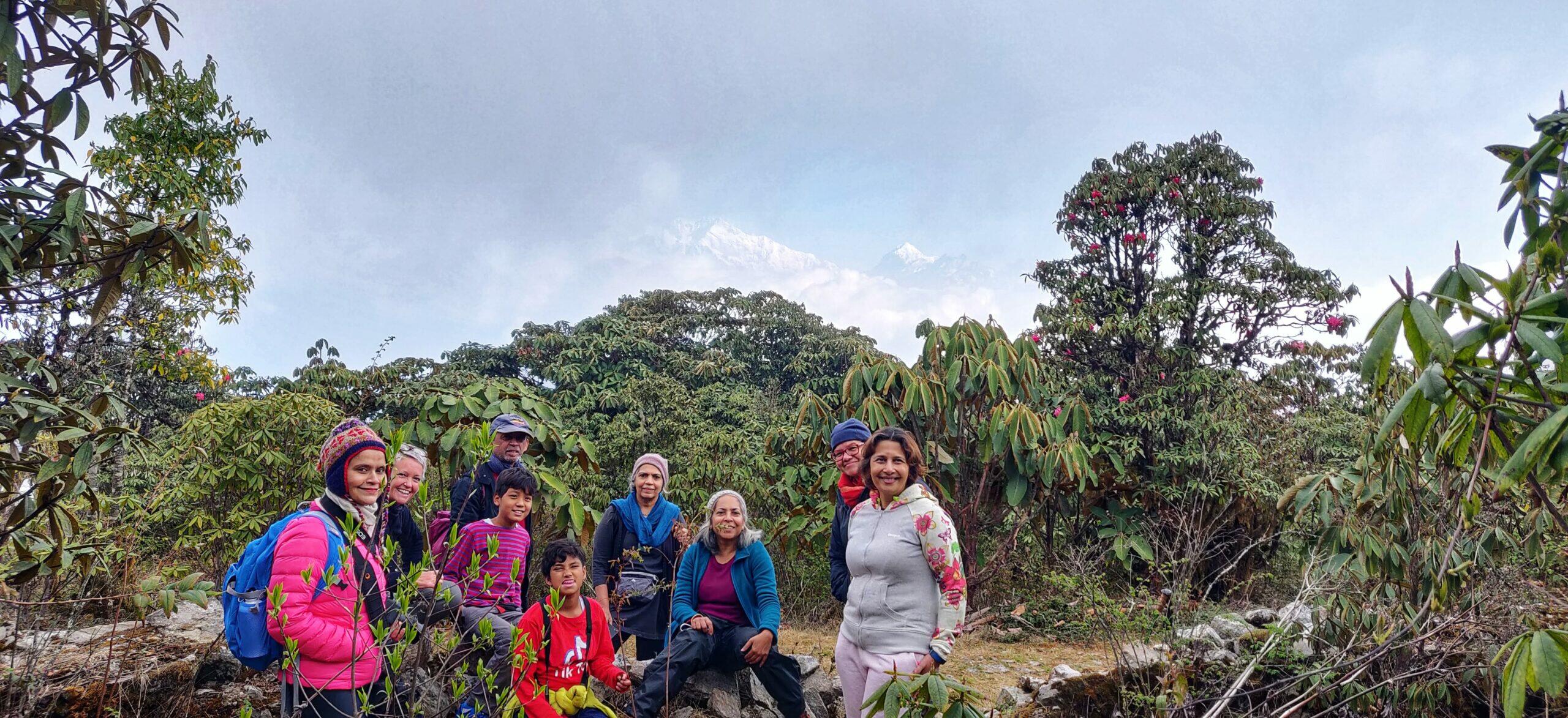
Our group split up after our 5 days in Sikkim Mid April last year. Some of us saw a bit of the icy peak from our hotel rooms in Kurseong and others saw the grand display of the snow mountains from Darjeeling. But at Barsey it felt special and so close like it was the next set of mountains. Maybe looking at it with the rhododendrons and a solitary prayer flag strung in between the trees for company made it so. For that moment was truly mine.
As I sit down to write this article a thought persists. Will the wishes of the Chogyal remain respected forever? Idealistic as it may be, I for one would like to believe that the summit will remain devoid of human footprints and the Lepcha people enjoy a blissful afterlife in Mayan Lyang.
The best time to visit Sikkim is in spring – March, April, early May and Post the monsoons in October and early November. To see great views of the Kanchenjunga from Darjeeling and other towns of West Sikkim is post the monsoons and in the winter months. There are many Kanchenjunga tour packages and routes to go walking and enjoy the beauty of the state both in West Sikkim and North Sikkim. Okhrey is about a 5-6 hour drive from Bagdogra airport and from Siligiri which has good railway connectivity. A local guide with knowledge of the local flora, fauna and walking trails is required to improve the experience. Good trekking shoes and outdoor clothing is a must for a tour to this region.


